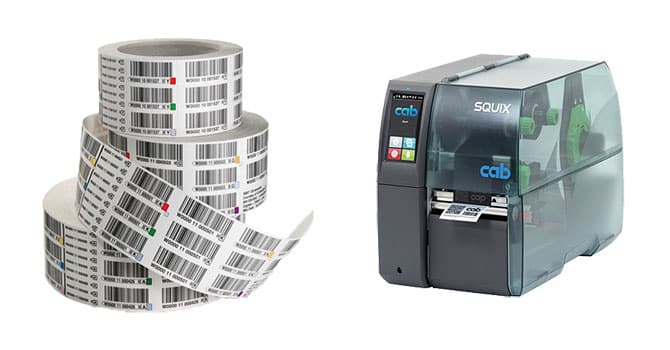One question in particular we are asked more frequently than others is: should I order my labels pre-printed, or should I be
printing on-demand in my facility? As a barcode solutions provider, we understand a number of existing factors within your specific facility will impact which strategy is best for you—that’s why we offer both options. Here, we’re going to break down which circumstances lead to print on demand being a good fit, vs. which situations are well suited to pre-printed barcodes so you can be sure you’re making the best decision for your facility.
When does it make sense to print on demand?
When you require variable data on your labels
In situations where lot code, expiration date, product/patient-specific information or other variable data is required on the label, print on demand is usually a good fit—especially if you don’t have all the info ahead of time.
Sometimes suppliers will be able to accommodate limited variable data if you can provide it in advance.
We typically see this in healthcare applications when the FDA
mandates specific information be documented for recall tracking purposes.
When your process requires the flexibility to make changes on-the-fly
If your variable data isn’t known in advance, you’ll need to print-on-demand.
In healthcare applications where patient information is necessary, printing in-house is absolutely essential.
Similarly, if your process requires batch printing based on usage demands, it might be more feasible to manage your label printing in-house—you don’t want to waste storage space or end up throwing out labels, and you certainly don’t want to run out unexpectedly!
When you just need ‘one more label’
If you receive a label set from your supplier and sometimes the process requires just one more barcode than you were provided, you can utilize a ‘Scan-1-Print-1’ system to scan an existing barcode and print a replica on-demand.
This is especially common in processes as it relates to Donation Identification Number labels. It’s also useful in labs at workstations where aliquoting may require additional labels.
When your volumes are manageable in-house.
If you use hundreds of thousands of sequentially numbered barcodes every day, things can feel a bit out of control. However, if the number of labels you’re applying is in the hundreds (or less), or if any of the above points apply to you, it’s likely you can manage an in-house strategy.
Keep in mind that automation can be integrated with your print on-demand strategy to enhance your process. While pre-printed labels can ease some of the burden on your team, it’s not the only solution, and, as we prefaced, there are a number of reasons pre-printed labels may not align with your needs.
If your lab requires a print on-demand solution and is seeking a way to enhance labeling efficiency, print and apply automation is worth considering.
When does it make sense to order pre-printed labels?
When barcode sequence management is critical
In mission-critical applications where it’s crucial to receive sequentially numbered, pre-scanned and verified barcodes, it’s best to leave your printing needs in the hands of your trusted solutions supplier.
Your supplier should also be able to manage barcode sequences for you to ensure you never receive a duplicate. Beyond that, your supplier can assist with demand planning and forecasting to ensure orders are released and shipped based on your needs.
When your label quantities are high or varied
In cases where you need hundreds of thousands, or even millions of labels, it makes sense to outsource purely due to capacity.
Additionally, if your process entails a low volume but high mix of different labels, it can be easier to manage through your supplier to ensure you’re not wasting time swapping out label stock and managing multiple label formats.
When you don’t have the resources to label in-house
In many facilities, lack of space is a genuine concern. If you don’t require variable data printed on-demand, you may want to consider outsourcing your label printing needs so you don’t have to store label media or find space for a printer.
Pre-printed barcodes also make sense if you have a small team. While learning to operate a thermal transfer printer and produce labels isn’t challenging, it does require maintenance and oversight, which can bog down staff who would be better served spending time on tasks that directly add value to your mission.
When you need specialty labels
It’s important to ensure the label stock and image will remain readable throughout its lifespan. While there are certainly durable print on demand options, like thermal transfer, your supplier should be capable of providing labels with increased durability.
Sometimes a splash of color is exactly what you need to optimize your process. Color allows for at-a-glance identification, brand representation, or communication of product-specific information. Your supplier will likely have access to marking technologies that can provide colored labels, without compromising durability.
When you want to receive labels that have already been affixed to your assets
It can make sense to receive labware already barcoded and ready to use. Some suppliers limit their pre-barcoded labware options to generic sequences—however there are more customizable services out there as well, including our
prepared labware.
This can be a viable option for companies that don’t require variable data on their labels but want to ensure sequence integrity, require special marking accommodations and/or require barcode placement accuracy for integration with automation.
Regardless of your workflows, it’s always important to discuss your labeling needs and goals with your trusted solutions partner to ensure full optimization of your barcode labeling strategy. All the same—we hope we’ve given you the tools to make the best decision for your application.

